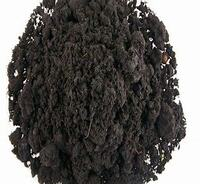1. Introduction
In the past 48 hours, global demand for advanced metal powders has surged as major aerospace manufacturers ramp up production of next-generation aircraft components using additive manufacturing. According to industry reports from June 2024, companies like Boeing and Airbus are significantly increasing orders for high-purity spherical titanium powder, especially Ti6Al4V grades, to meet lightweighting and performance goals. This renewed focus highlights the critical role titanium powder plays in modern engineering—and why understanding its types, costs, and suppliers matters more than ever.

Titanium powder—often referred to simply as ti powder—is far more than just ground-up metal. It’s a high-performance material enabling breakthroughs in 3D printing, biomedical implants, defense systems, and even pyrotechnics. Whether you’re an engineer sourcing materials, a researcher exploring nanomaterials, or a hobbyist curious about titanium flash powder, this guide breaks down everything you need to know about titanium powder in today’s market.
2. What Is Titanium Powder?
Titanium powder is a fine particulate form of titanium metal or its compounds, produced through methods like gas atomization, hydride-dehydride (HDH) processing, or plasma spheroidization. Unlike bulk titanium, which is known for its strength-to-density ratio and corrosion resistance, titanium powder unlocks new possibilities—especially in powder-based manufacturing techniques.
Common variants include pure titanium powder (Grade 1 or 2), titanium alloy powder like ti6al4v powder (also called ti64 powder), and compound powders such as titanium nitride powder, titanium carbide powder, and tio2 nano powder. Each serves distinct purposes: while pure titanium powder is ideal for biocompatible implants, ti6al4v powder dominates aerospace and automotive 3D printing due to its superior mechanical properties.
3. Key Types and Their Applications
3.1 Pure and Alloy Titanium Powders
Pure titanium powder is used where corrosion resistance and biocompatibility are paramount—think dental implants or chemical processing equipment. In contrast, titanium alloy powder, particularly ti6al4v powder, offers enhanced strength and heat resistance, making it the go-to choice for jet engines and structural aerospace parts. The demand for titanium powder for 3d printing has skyrocketed, with spherical titanium powder being preferred for its flowability in laser powder bed fusion systems.

3.2 Specialty Titanium-Based Powders
Beyond metallic forms, engineered powders like titanium diboride powder (tib2 powder), titanium boride powder, and titanium nitride powder serve niche roles in cutting tools, wear-resistant coatings, and refractory applications. Tio2 powder—titanium dioxide—is widely used in sunscreens, paints, and food (though nano-sized tio2 nano powder raises regulatory questions). Meanwhile, titanium flash powder, a pyrotechnic mix often containing potassium perchlorate, produces brilliant white sparks but requires careful handling due to flammability risks.
Burnt titanium powder coat refers to oxidized residues sometimes seen after high-temperature processing, while titanium coated diamond powder enhances abrasive performance in polishing compounds.
4. Pricing and Market Trends
Understanding titanium powder price is essential for procurement planning. Prices vary dramatically based on purity, particle size, morphology (spherical vs. irregular), and alloy composition. As of mid-2024, titanium powder price per kg ranges from $80–$150 for HDH titanium powder, while high-quality gas atomized titanium powder for 3d printing can cost $300–$600/kg. Ti6al4v powder price typically sits at the higher end due to complex processing.
For those looking to buy titanium powder, factors like batch consistency, oxygen content, and supplier certifications (e.g., ASTM F1580 for medical use) heavily influence value. International titanium powder markets are competitive, with major players in the U.S., Germany, China, and Japan. Always compare titanium powder cost against total lifecycle benefits—cheaper powder may lead to failed prints or part defects.

5. Titanium vs. Other Metal Powders
While titanium powder dominates lightweight, high-strength applications, engineers often evaluate alternatives like molybdenum powder and tungsten powder. Molybdenum metal powder (including tzm powder and molybdenum disulfide powder) excels in high-temperature furnaces and lubrication, with moly disulfide powder used in dry lubricants. Similarly, tungsten powder—especially spherical tungsten powder and tungsten carbide powder—is prized for density and wear resistance in armor, radiation shielding, and cutting tools.
Global tungsten & powders corporation and other tungsten powder suppliers offer products like fused tungsten carbide powder and tungsten disulfide ws2 powder. Though tungsten powder price per kg is generally lower than titanium metal powder price, its extreme density (tungsten powder density ~19.3 g/cm³) makes it unsuitable for weight-sensitive designs. Molybdenum powder price and mos2 powder price also reflect specialized industrial demand.
6. Sourcing and Safety Considerations
When you buy titanium powder, ensure your titanium powder supplier provides full material traceability and safety data. Titanium dust can be combustible under certain conditions—fine particles may ignite spontaneously in air, though commercial grades are usually stabilized. Always store in inert atmospheres and follow OSHA guidelines.
- Verify certifications for additive manufacturing (e.g., ISO/ASTM 52900)
- Request particle size distribution and Hall flow rate data
- Confirm if powder is gas atomized (better for 3D printing) or HDH (cost-effective for pressing/sintering)
Reputable titanium powder for sale options include both established firms and emerging vendors specializing in titanium nanopowder or custom blends like tih2 powder (titanium hydride), used as a foaming agent.
7. Conclusion
Titanium powder is a cornerstone of modern advanced manufacturing, with uses spanning from life-saving medical devices to cutting-edge aerospace components. Whether you’re evaluating titanium powder for 3d printing price competitiveness, comparing it to molybdenum or tungsten alternatives, or sourcing ti64 powder for a critical project, understanding its varieties, costs, and handling requirements is essential. As additive manufacturing continues to evolve, so too will the innovation around titanium powder—making it a material worth watching closely.
Our Website founded on October 17, 2012, is a high-tech enterprise committed to the research and development, production, processing, sales and technical services of ceramic relative materials such as Titanium. Our products includes but not limited to Boron Carbide Ceramic Products, Boron Nitride Ceramic Products, Silicon Carbide Ceramic Products, Silicon Nitride Ceramic Products, Zirconium Dioxide Ceramic Products, etc. If you are interested, please feel free to contact us.
